Ford’s Levacar Mach 1
By Jim and Cheryl Farrell
After several years as a consultant, George Walker finally became a Ford vice president and head of the renamed Styling Center in May 1955. Until Walker took over, Ford styling was a lesser part of Ford Engineering. At the time, Earle MacPherson was Ford’s chief engineer. Although they were polite to each other, Walker and MacPherson didn’t get along. It’s not an understatement to say they intensely disliked each other. There was never a question about MacPherson’s competence, but he was also dictatorial, and he didn’t like designers who he thought were mostly impractical dreamers. MacPherson wanted designers under his thumb as a part of his Engineering Department. Walker, on the other hand, wanted control of all design at Ford and a separate design department that was on an equal footing with Engineering.
MacPherson was not subject to Ford’s new policy requiring that all executives retire at age 65. Walker was because he became a Ford employee after that policy went into effect. For years, MacPherson fought tooth and nail and successfully prevented the separation of design from Engineering. In 1955 MacPherson finally lost that battle, but as a consolation prize, he got to set up his own design studio in his Engineering Department. MacPherson recruited several of the “more practical” Ford designers (including Gil Spear), who left the Styling Center to set up a separate but smaller design studio in the Engineering Department to work on MacPherson’s engineering projects.
MacPherson turned 65 in 1956, but showed no signs of retiring, or giving up his power. Walker was not due to retire until 1961, and he desperately wanted to leave a Styling Center to his successor that controlled all aspects of Ford design. Walker got his opportunity in 1957, when MacPherson had a serious heart attack.
MacPherson’s successor as Ford’s chief engineer was Andy Kucher. Walker made sure he and Kucher were on the best of terms. At first, Kucher was a pinch-hitter during MacPherson convalescence. Kucher actually became Ford’s chief engineer when MacPherson couldn’t return to work and retired on May 1, 1958. Kucher was far different than MacPherson. He was mild mannered and not really a car guy. Previously Kucher had been head of Ford’s Scientific Laboratory, and his background included almost everything except cars.
To encourage Kucher to give up Engineering’s separate design department, Walker agreed to help him design and develop his 30-year pet project—a one-man people mover without tires that levitated on a cushion of air and got its forward motion (at least for purposes of Ford’s display) from a small squirrel-cage heater fan. The Levacar Mach I became the most unusual concept vehicle ever designed and built at Ford.
Walker assigned the Levacar project to Elwood Engel’s Corporate Advanced studio. Engel was Walker’s assistant manager and the person he wanted to succeed him when he retired. The hand-picked stylists in Engel’s studio who worked on the Levacar included Gale Halderman, who did most of the design work, and Dean Beck. Design engineering was done by Bob Thomas and Ray Smith. The primary clay modelers were Harry Stricker, Cecil Perkins, Dick Sprague and Joe Seibold.
While the Levacar was being designed, Kucher visited the Styling Center often where Walker made sure he was treated like royalty. Kucher’s ideas were encouraged and as much as possible incorporated into the design of the Levacar, Even the name “Levacar” came from the Engineering Department. Kucher’s engineers also came up with the three round stainless steel pads for the bottom of the Levacar with holes in them that blew out high-pressured air allowing the Levacar to hover over a super-smooth metal surface. For the air supply, the Levacar was designed with an onboard air compressor. A display was also designed and built which included a 3-foot wide circular stainless steel track 35-feet in diameter with a metal tether that allowed passengers to ride the Levacar around in a circle. On May 20, 1958, the Levacar display opened at the Ford Rotunda. For a while even the general public was allowed to ride in it, until problems arose because the surface on which it rode constantly needed adjustment. Visitors to the Levacar display were also given a small Levacar model with a “mouthpiece” they blew air into that made the model levitate.
Many magazine articles featured the Levacar as the next big thing in transportation. Some cutely opined that Henry Ford had put people on wheels but his grandson was trying to take their wheels away. The Levacar display was then shown at the Chicago Auto Show (as part of the Edsel display). It was also later displayed in Cleveland, Miami, Redondo Beach, and Denver.
Given the technology of the day, Kutcher was never able to develop a method that allowed the Levacar to travel over public roads. As a last resort, he changed direction and proposed that Ford build a Levatrain transportation system between New York City and Atlantic City, New Jersey. After spending over $1 million on the Levacar project, Henry Ford II decided that was enough and stopped the program. Ford was not going into the train business.
Walker retired in 1961. His successor was not Engel, but Gene Bordinat. Bordinat didn’t like spending any of his budget on unique or space-age concept cars, so he mostly authorized concept cars made by modifying production vehicles. A disheartened Kucher retired on March 31, 1962. With Kucher’s retirement, the Levacar project lost its champion. The Levacar itself and its display were in storage in a back room at the Ford Rotunda when they were destroyed by fire on November 9, 1962.
At the time the Levacar was developed, other companies and government agencies were also developing hovercrafts that ran mostly over water, but no one was successful in developing a similar vehicle that successfully ran over roadways.
Recently, there have been news reports claiming that tire particles created during driving are becoming a major pollution problem, whether the vehicle is electric or gas powered. Maybe it’s time for someone to try developing a Levacar again. The 500 mph forecast (the Mach 1 part of the name) by Kucher isn’t necessary, but only something that will navigate Dearborn’s potholes and travel on today’s freeways at more modest speeds.
Photos: Ford Design
Books by Jim and Cheryl Farrell
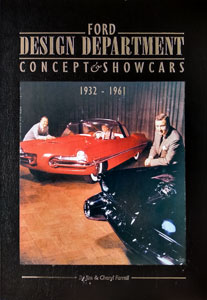
Ford Design Department—
Concepts & Showcars
1999, 10×13, 400 pages, Fully indexed
900 photos. Includes 150+ designers and sculptors, and highlights 100 concept cars.
ISBN 0-9672428-0-0
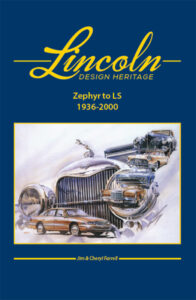
Lincoln Design Heritage:
Zephyr to LS (1936-2000)
2021, 10×13, 480 Pages, Fully Indexed
1,600 photos and illustrations
ISBN 978-0-9672428-1-1
The Ford book is $50 plus $7 S&H (US). The Lincoln book is $85 plus $10 S&H (US). Both books bought together are $110 plus $17 S&H (US). To order, email: cfarrell57@gmail.com

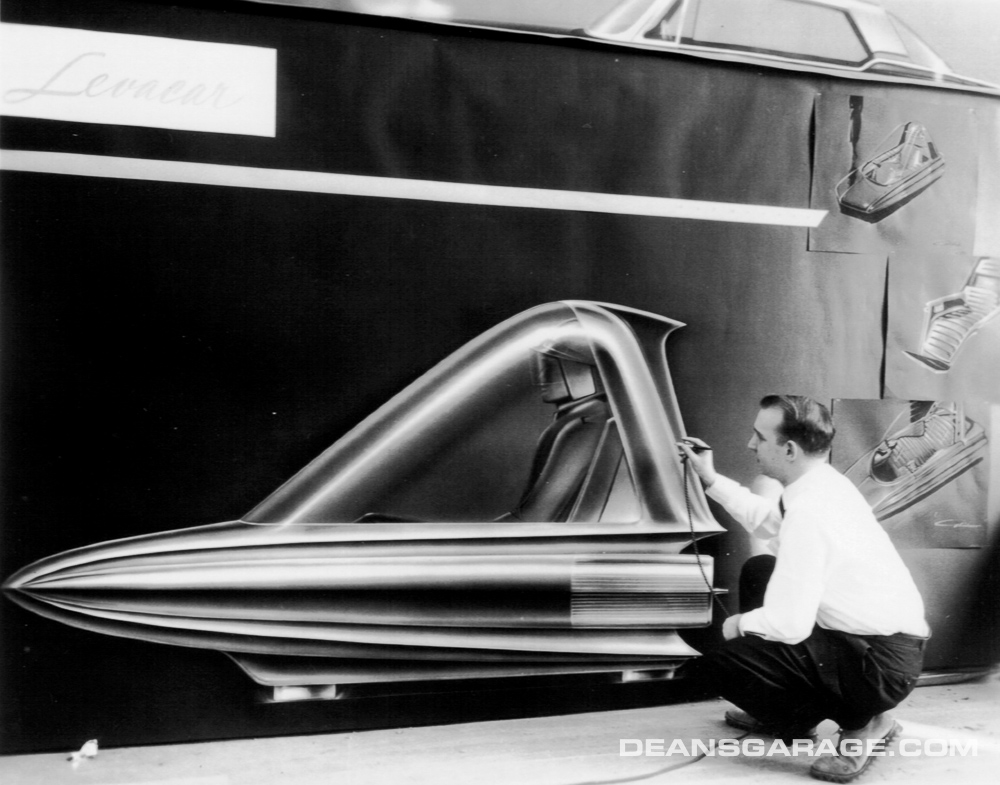
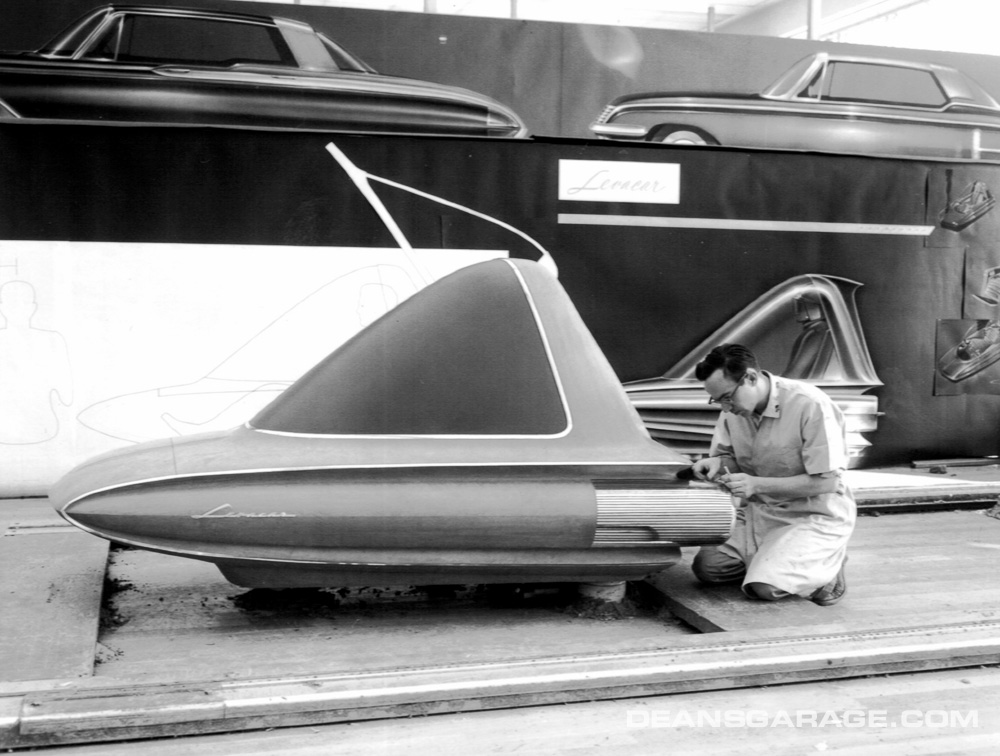
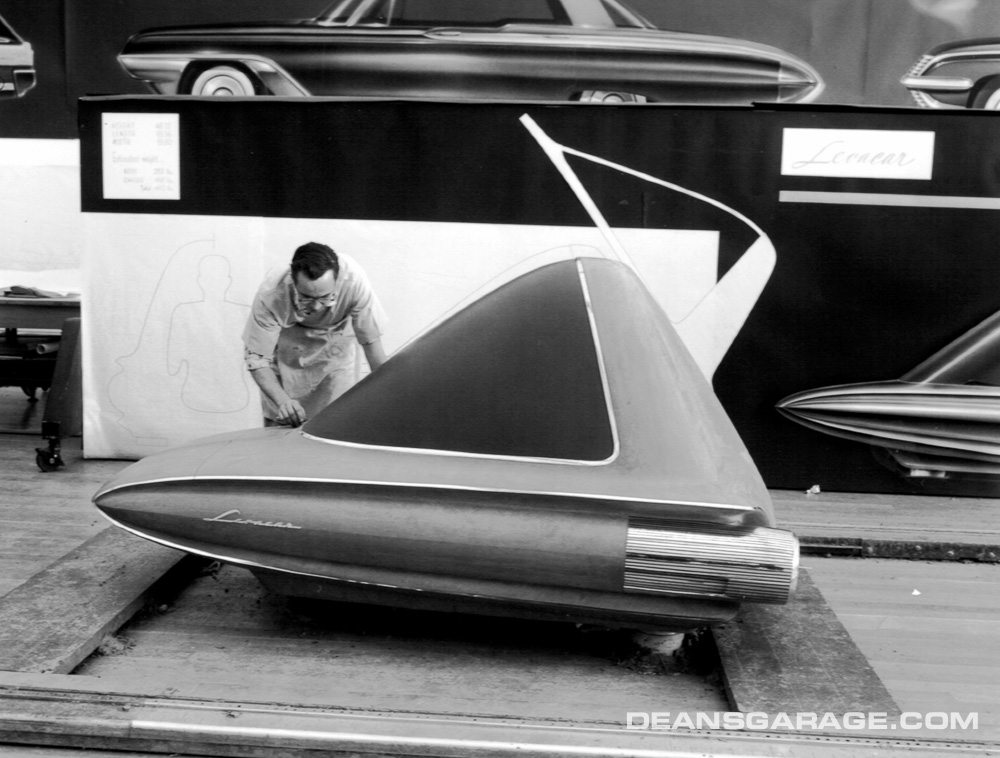
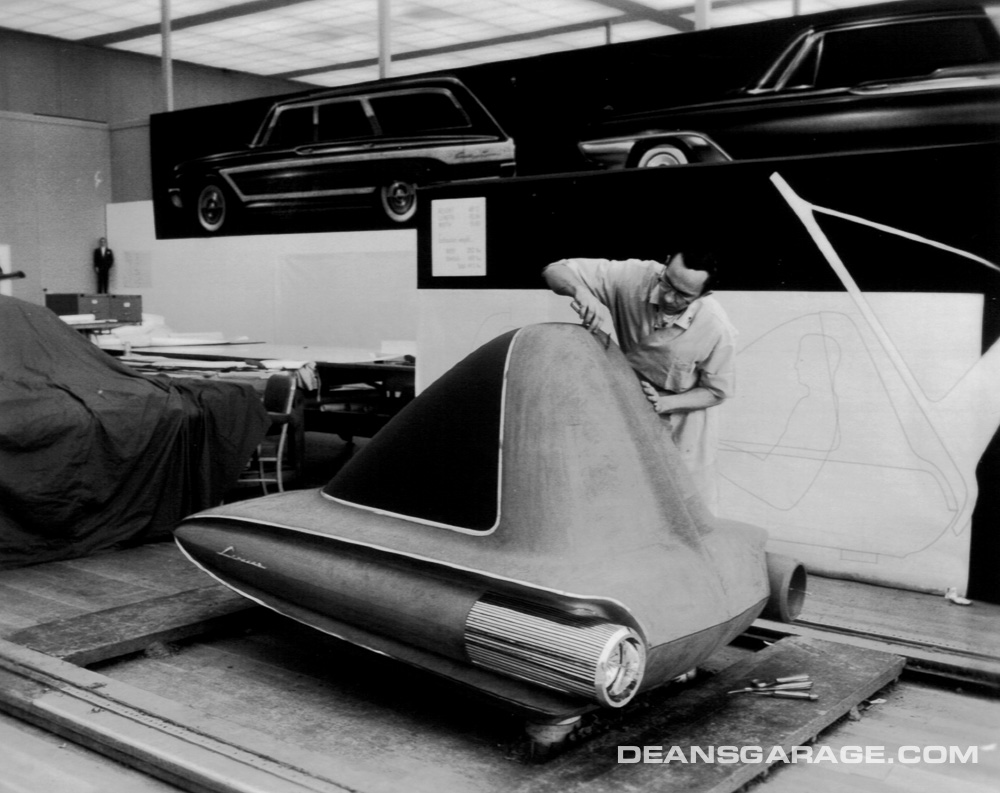
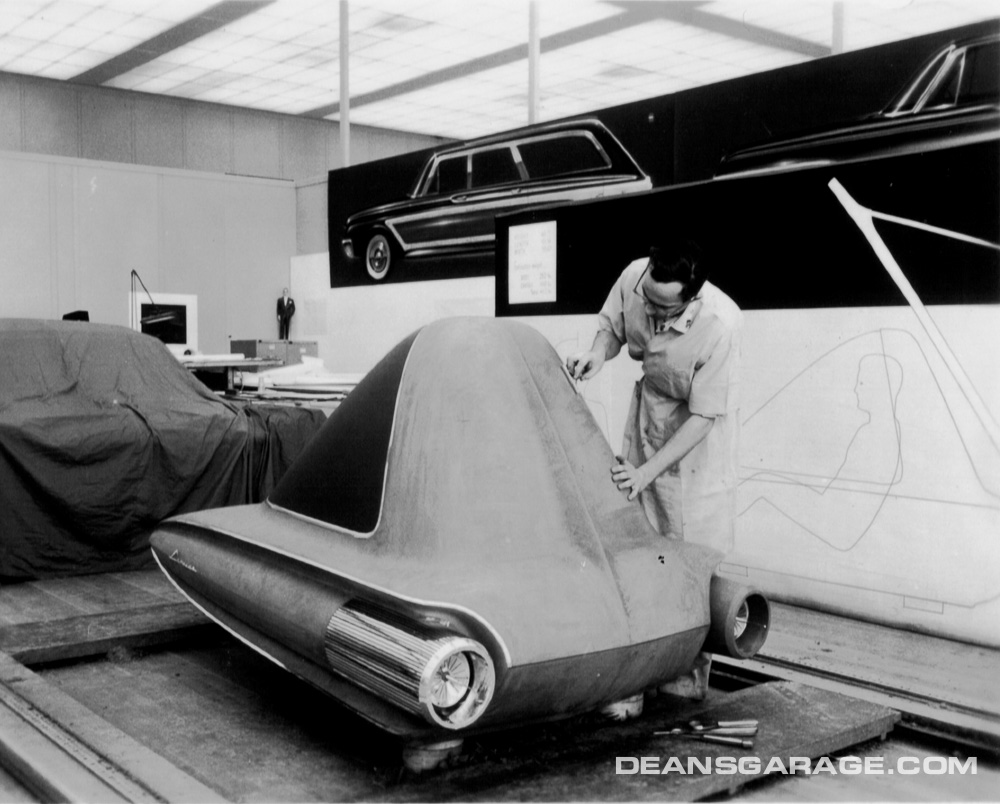
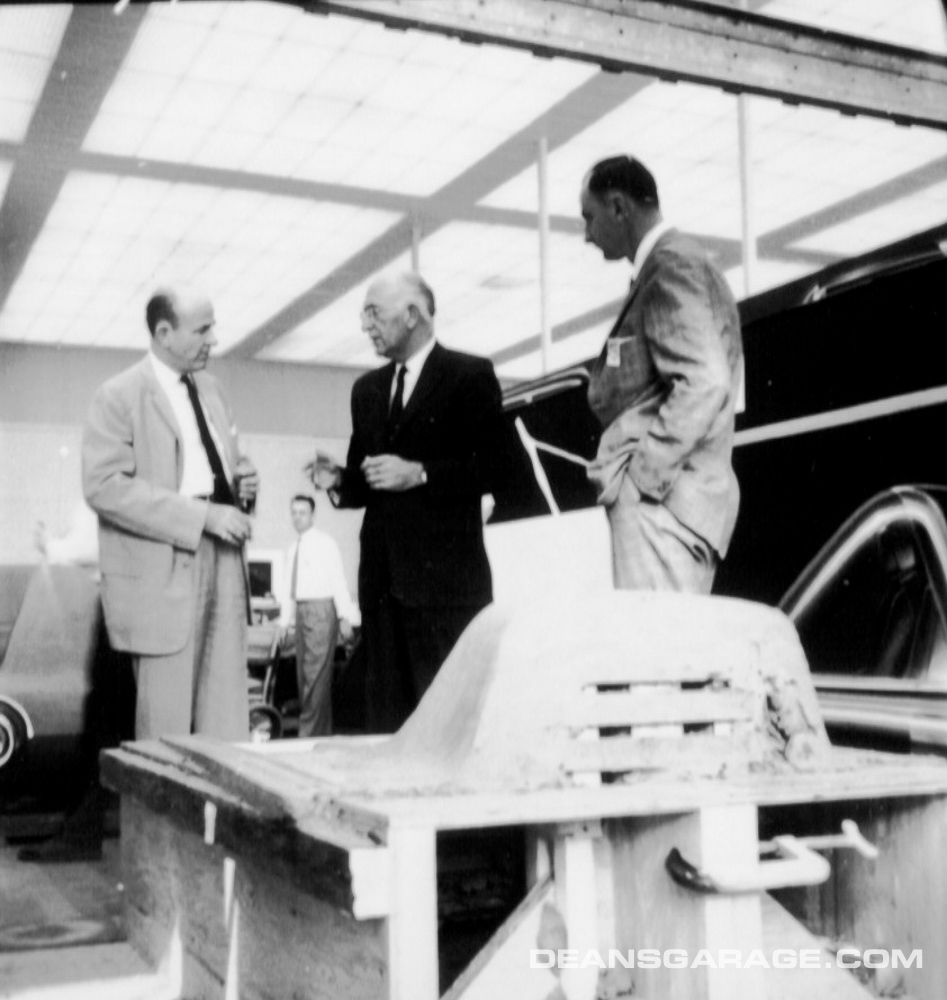
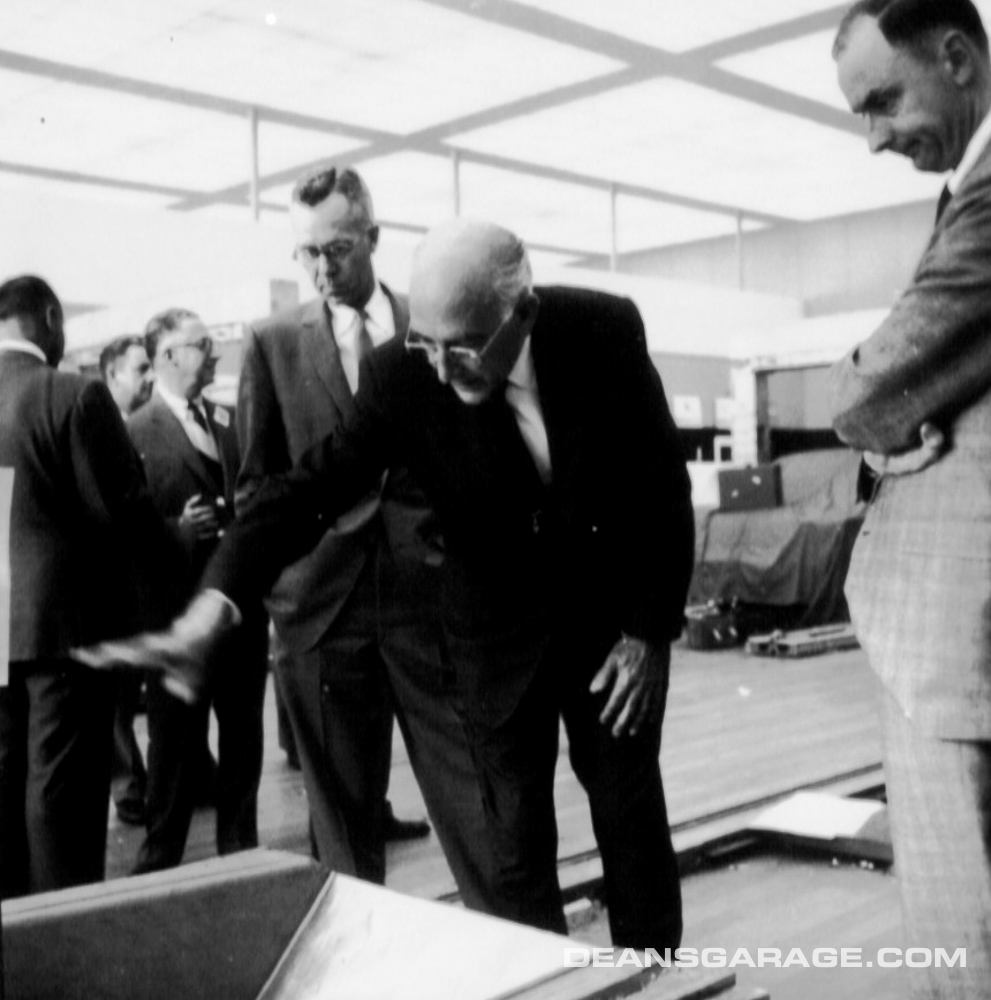
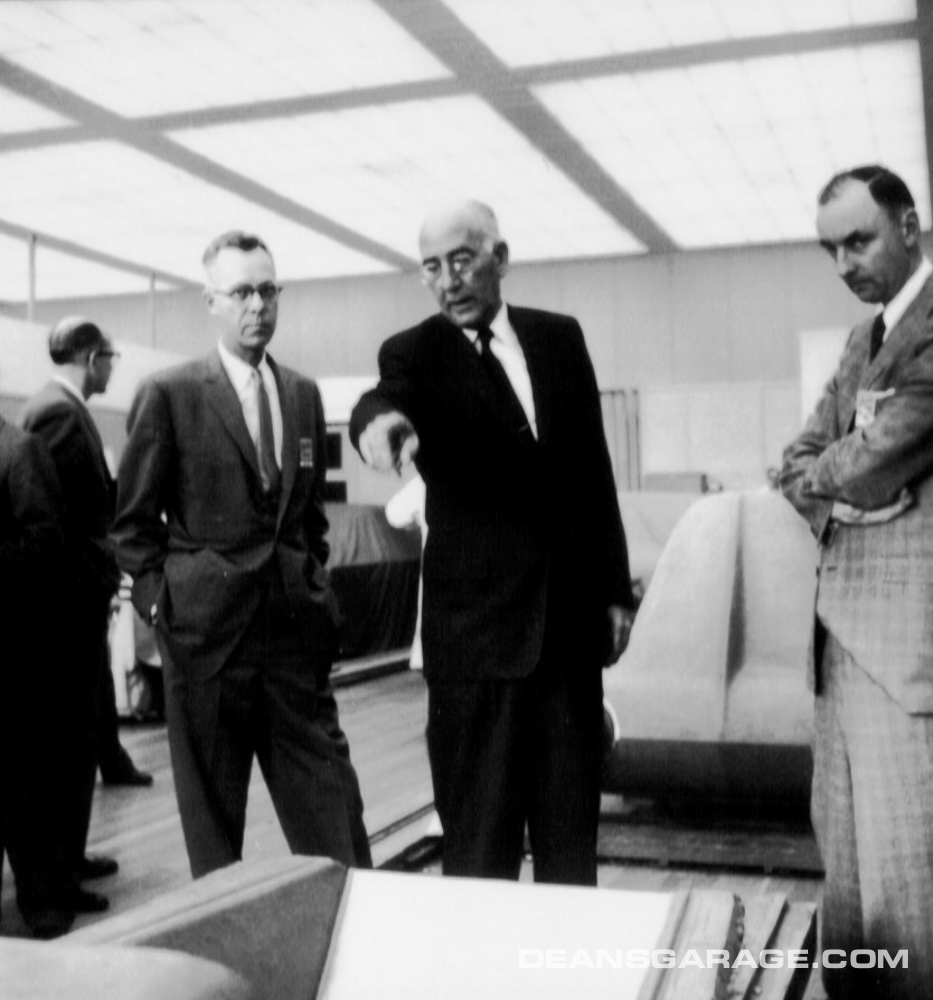
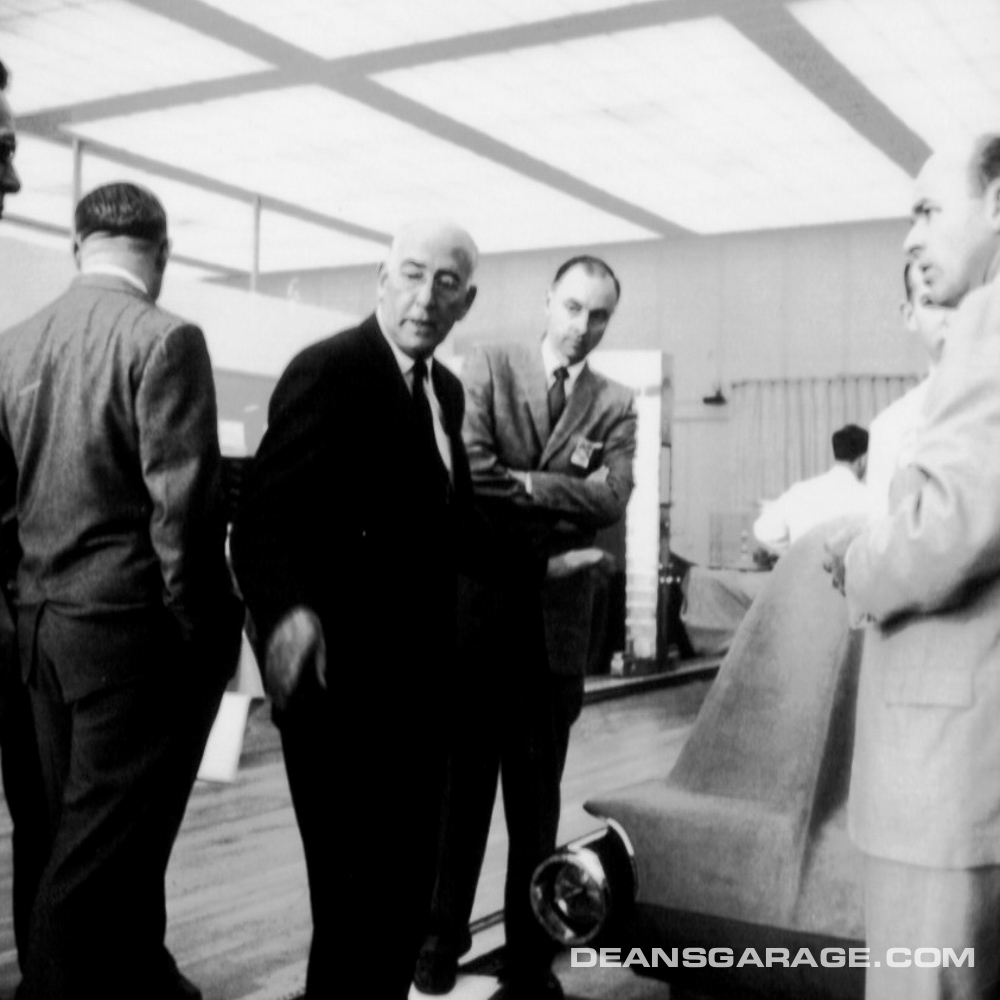
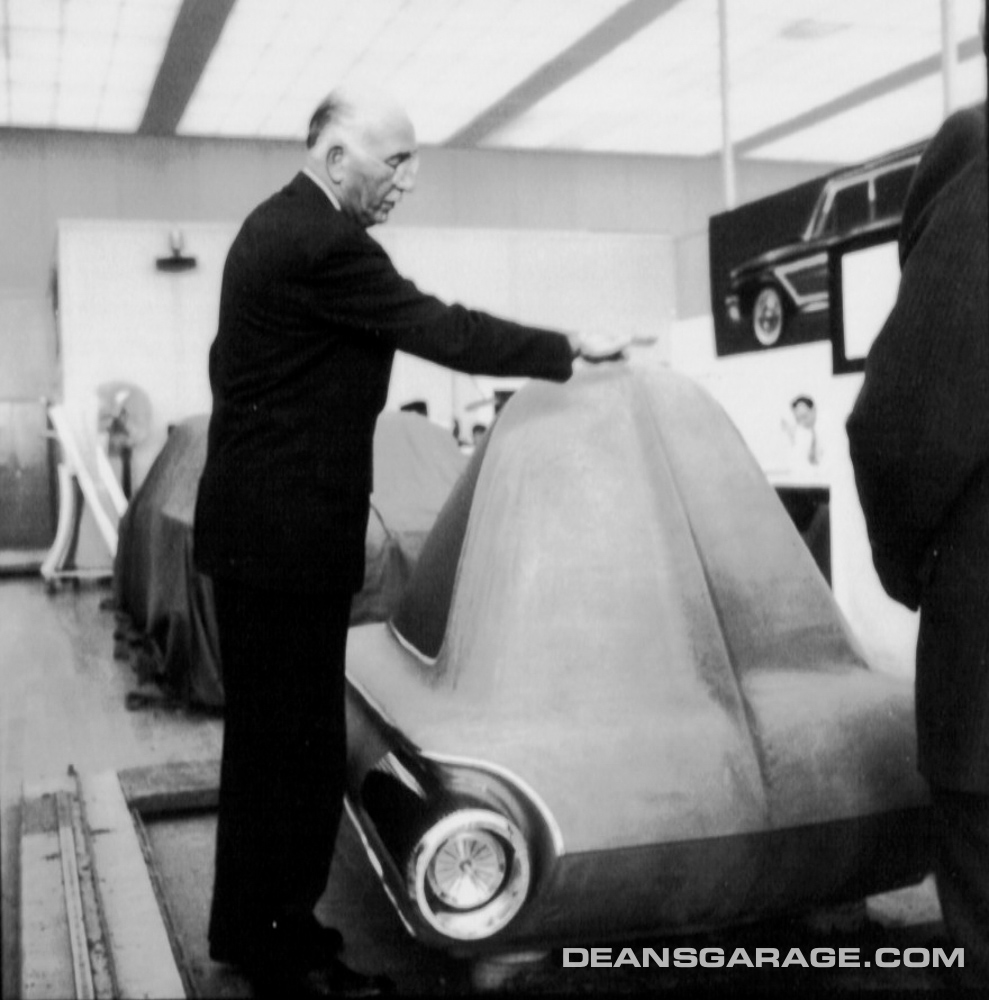
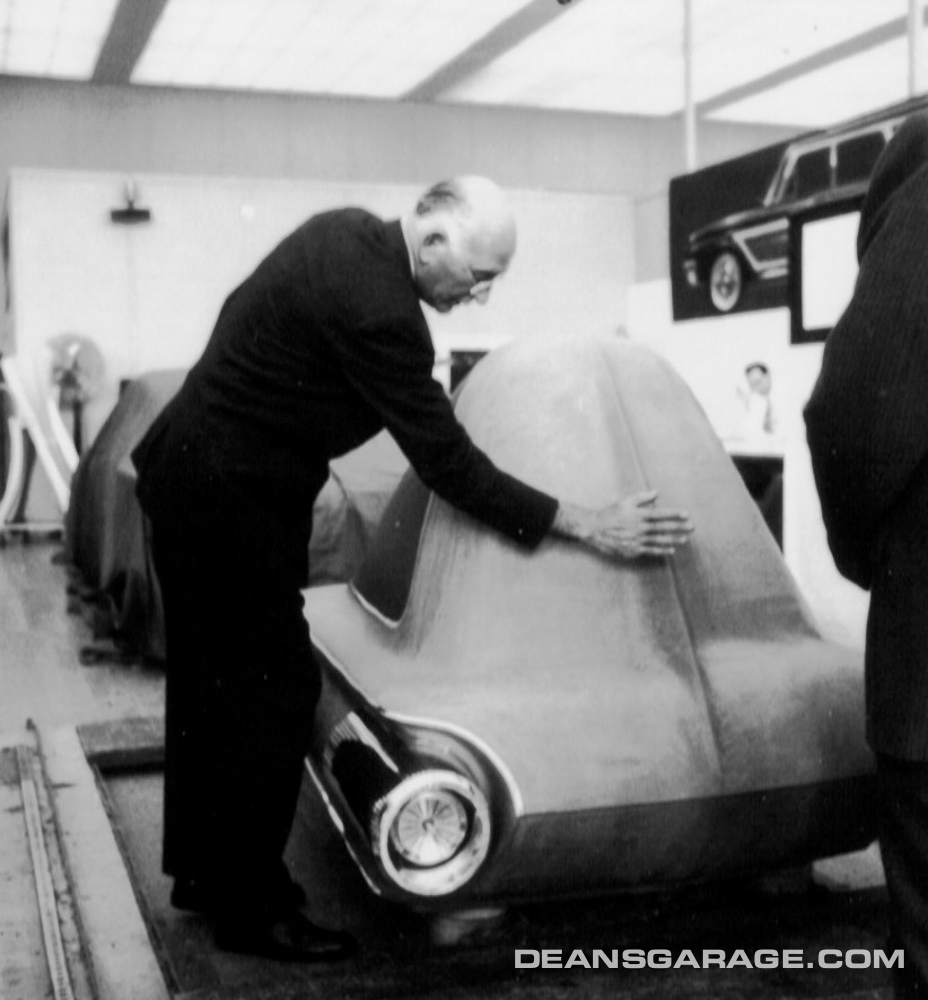
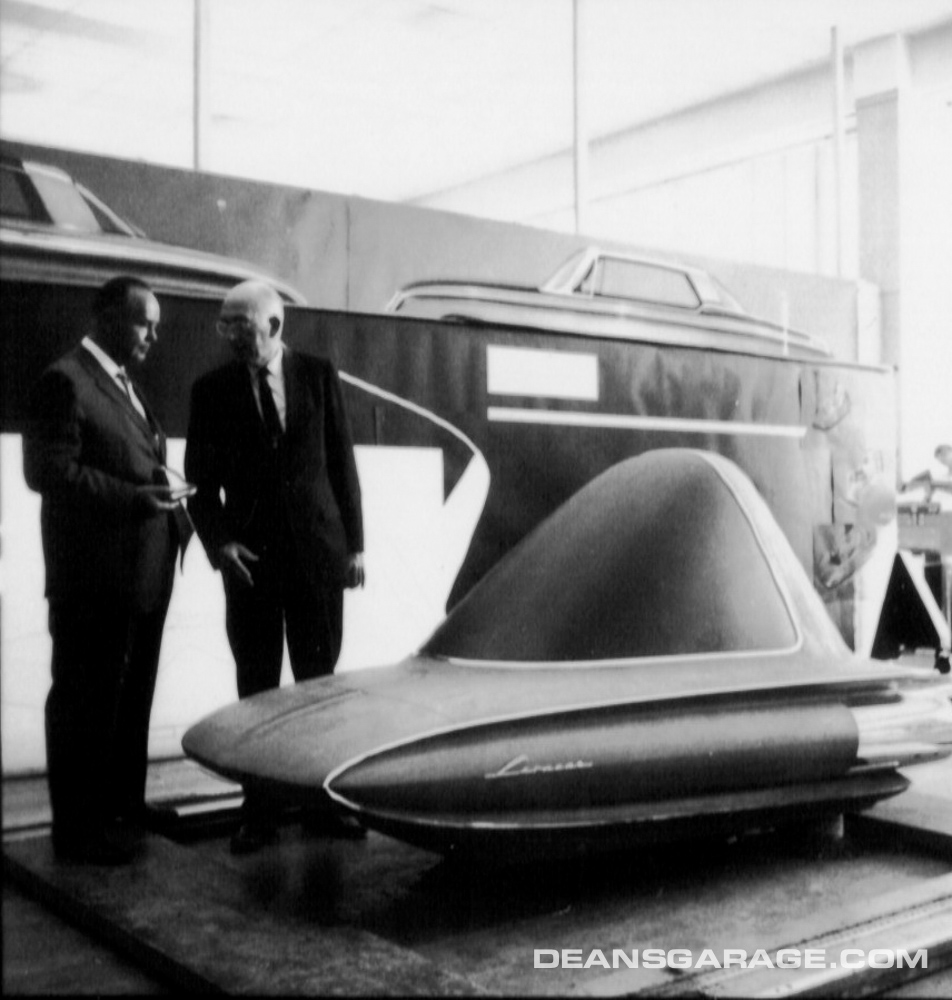
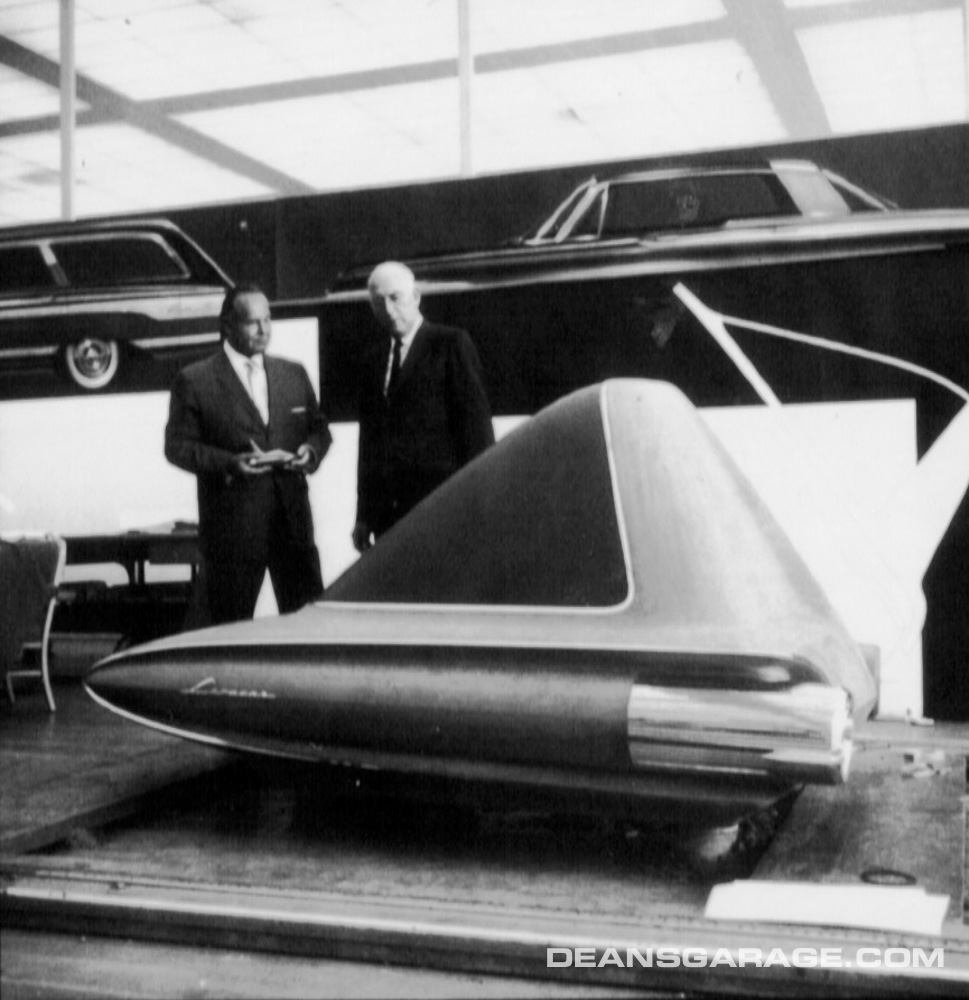
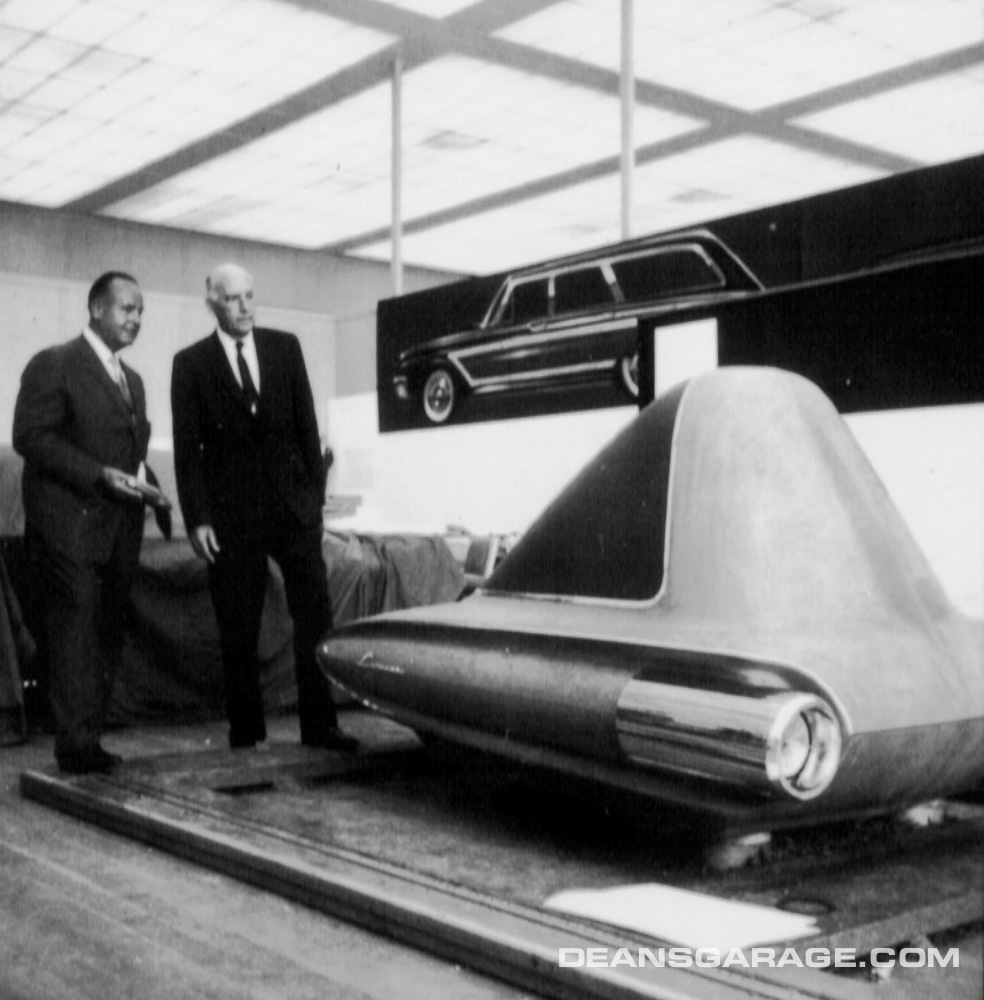
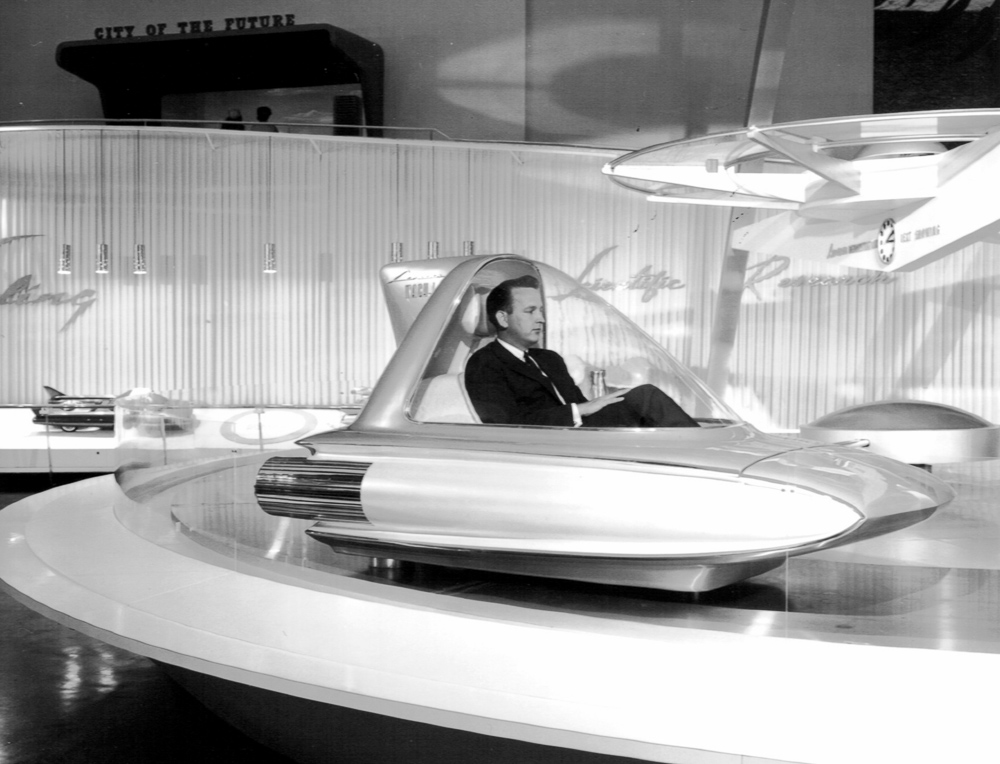
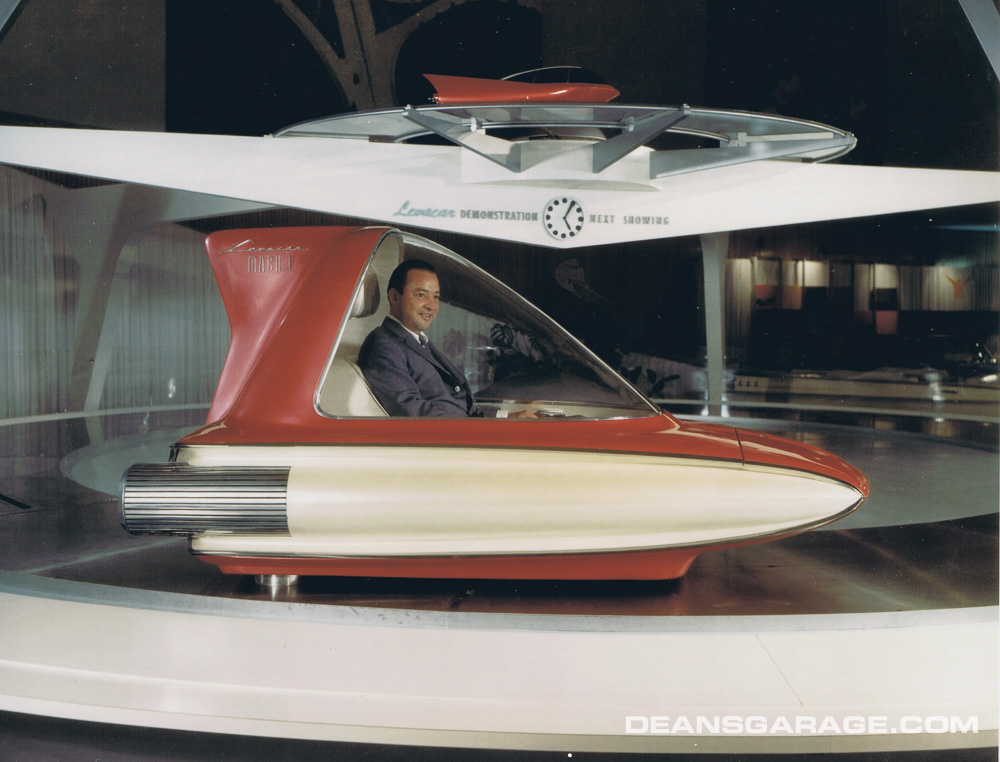
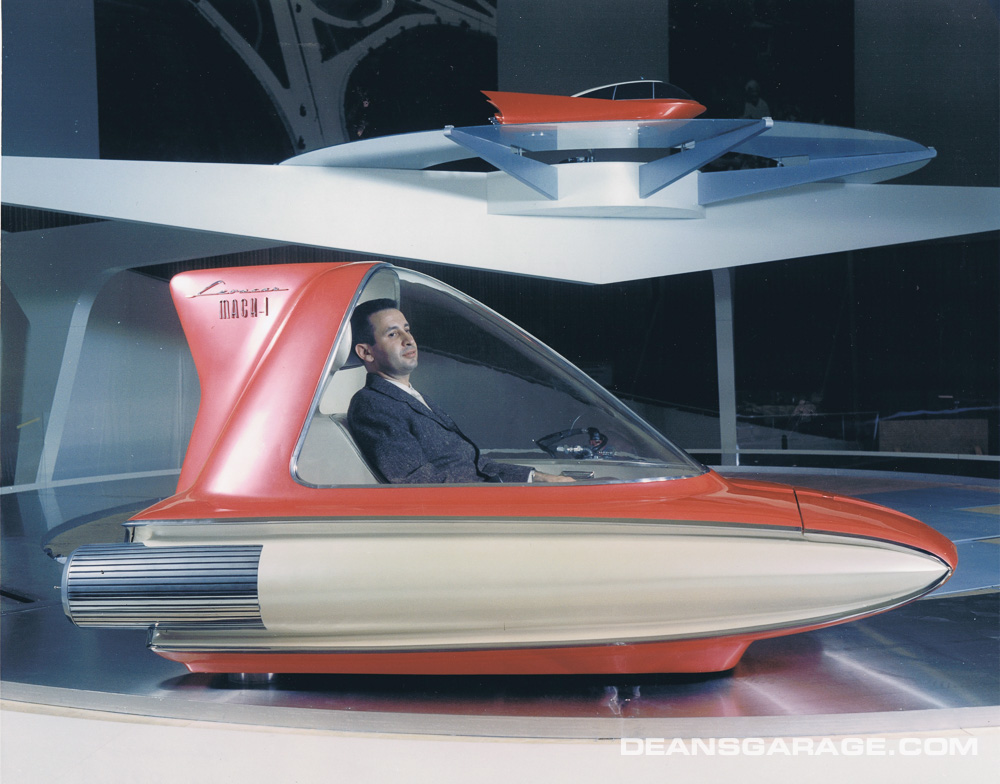
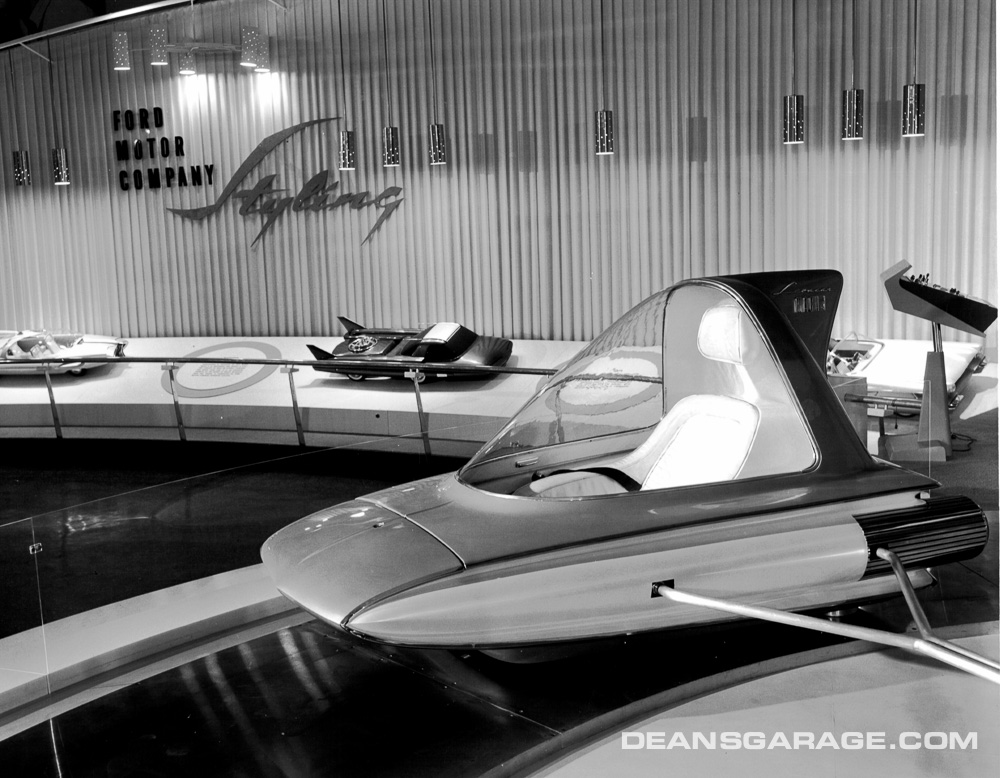
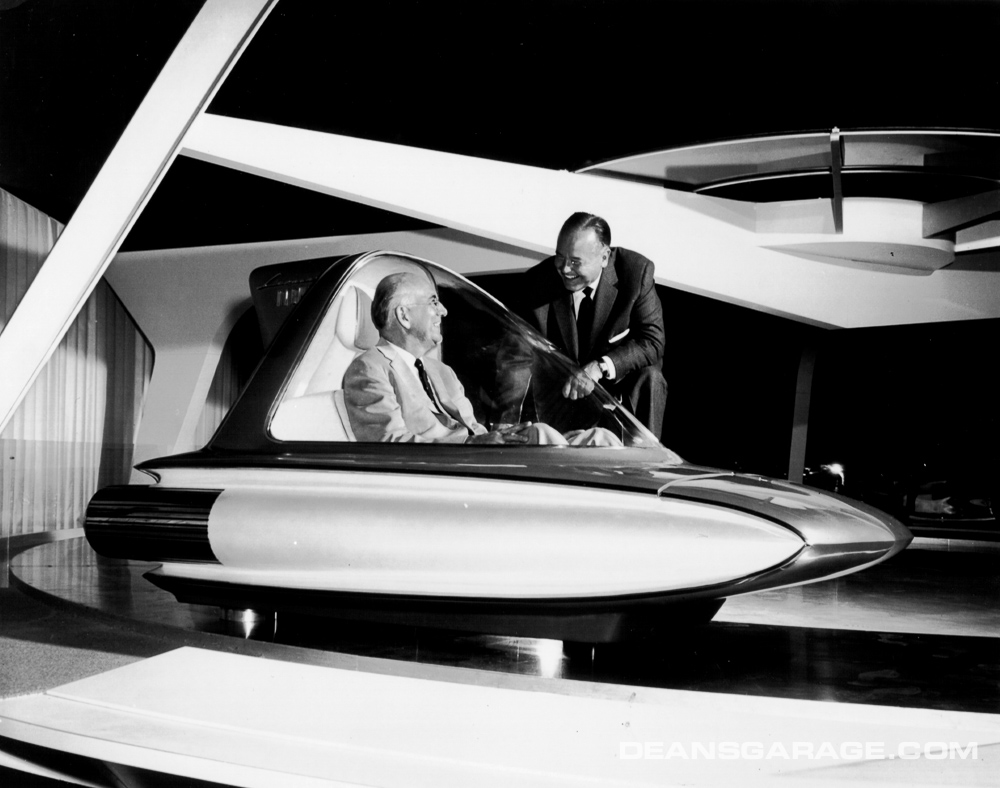
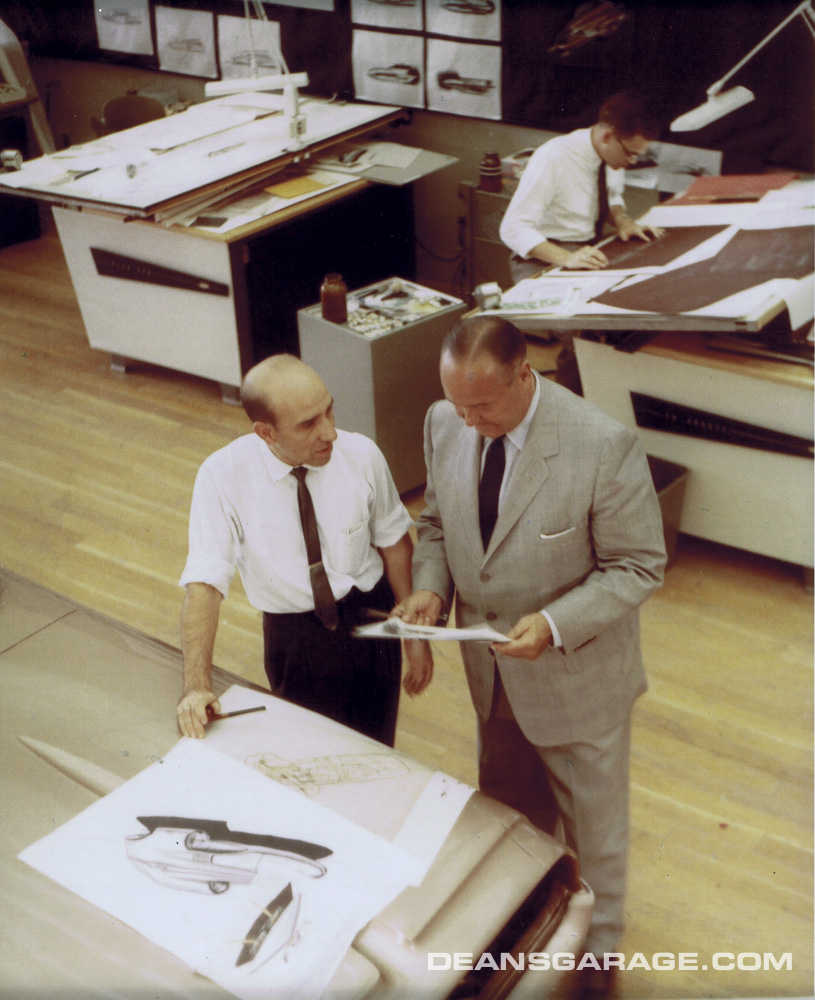
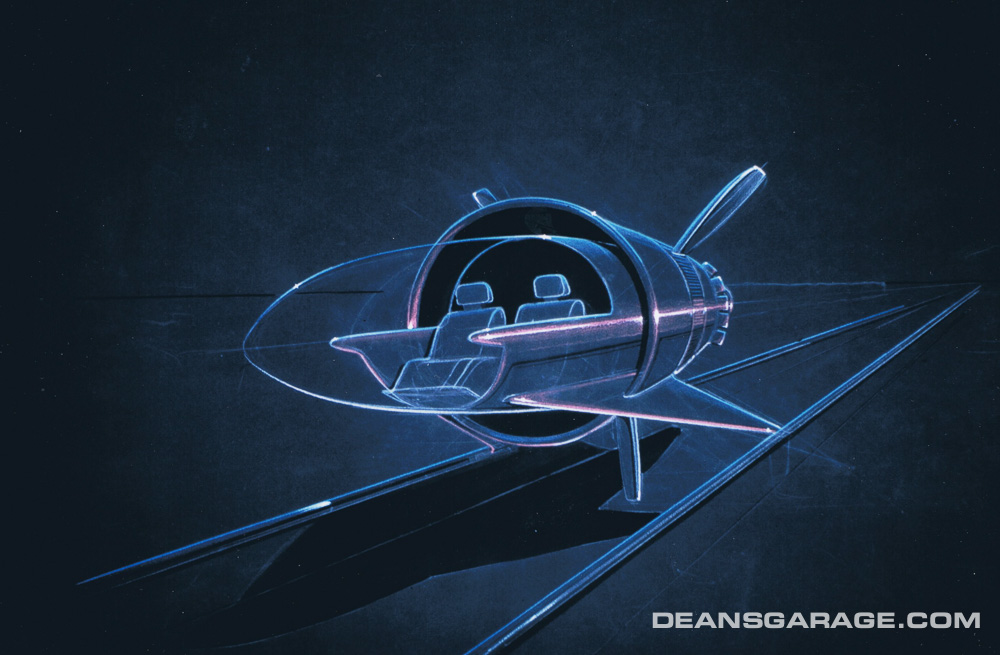
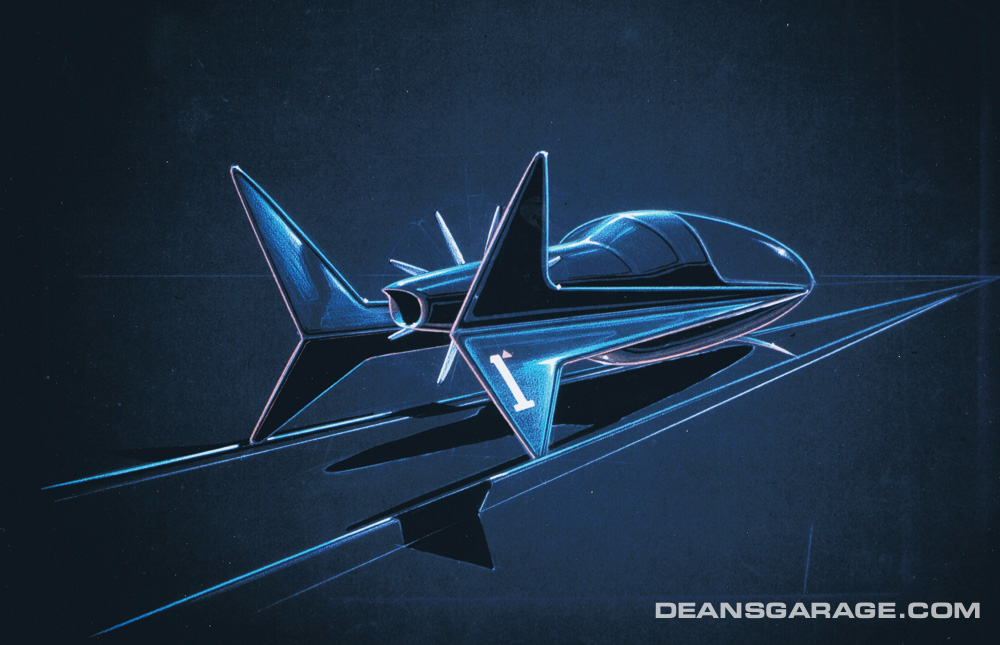
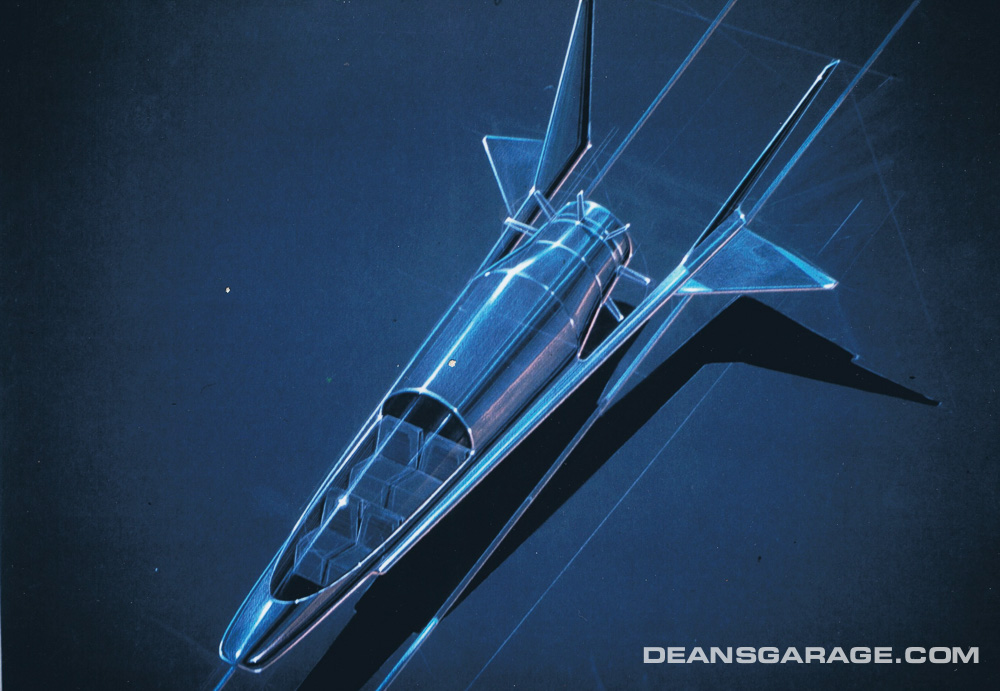
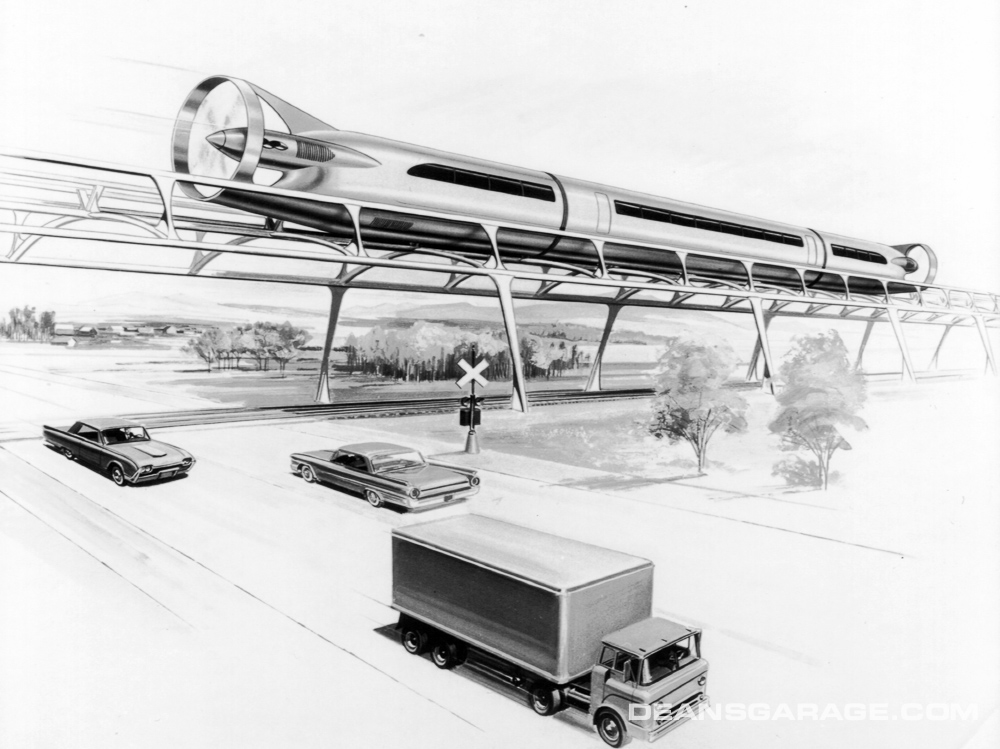
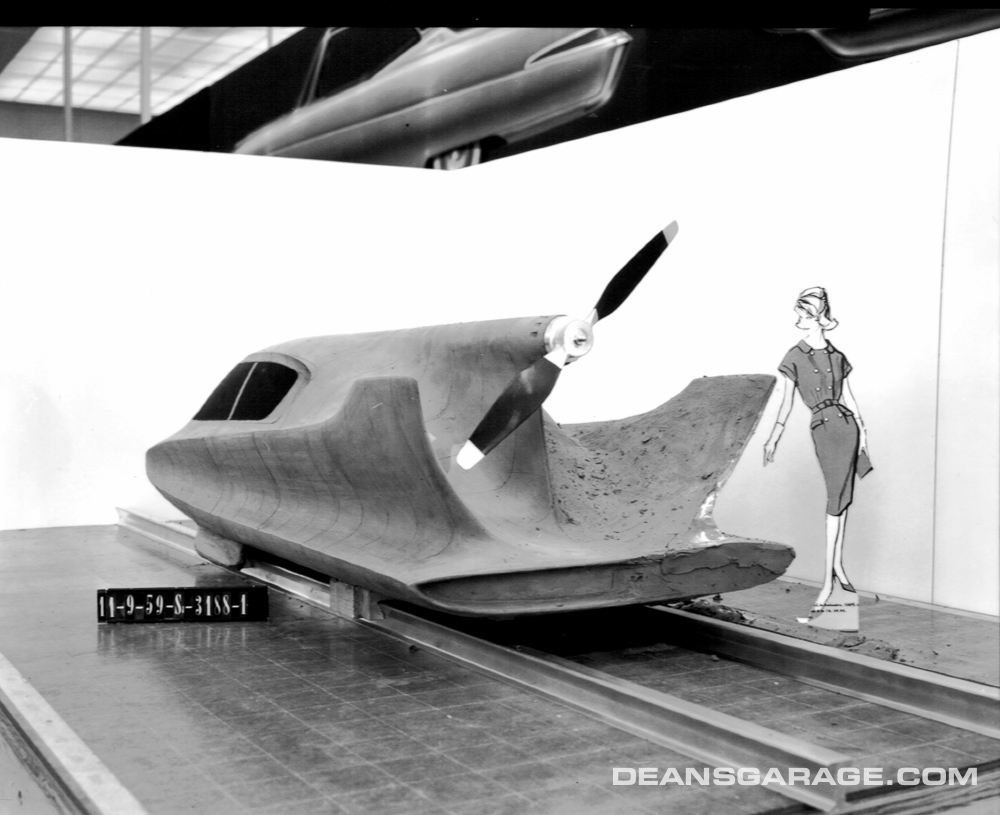
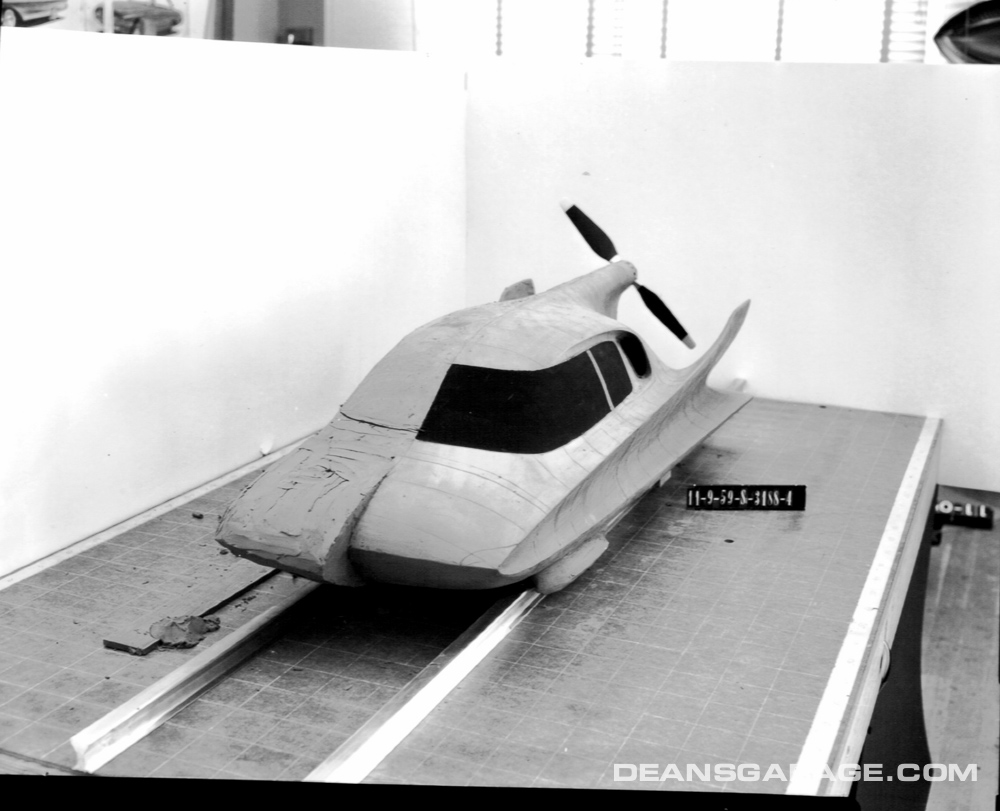
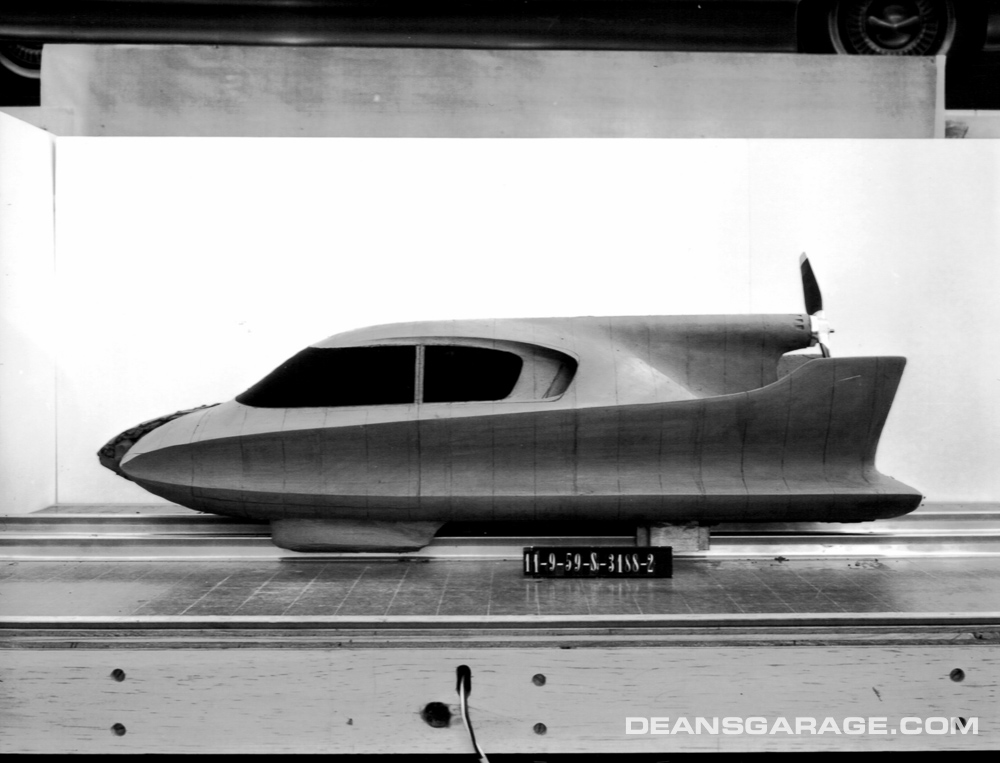
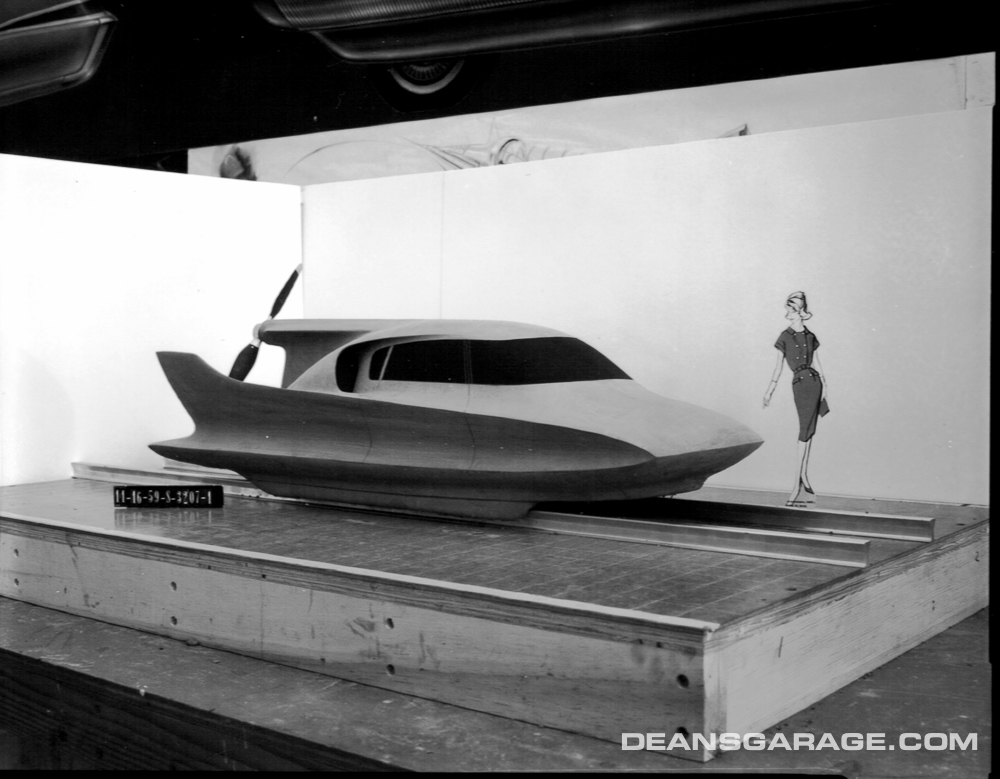
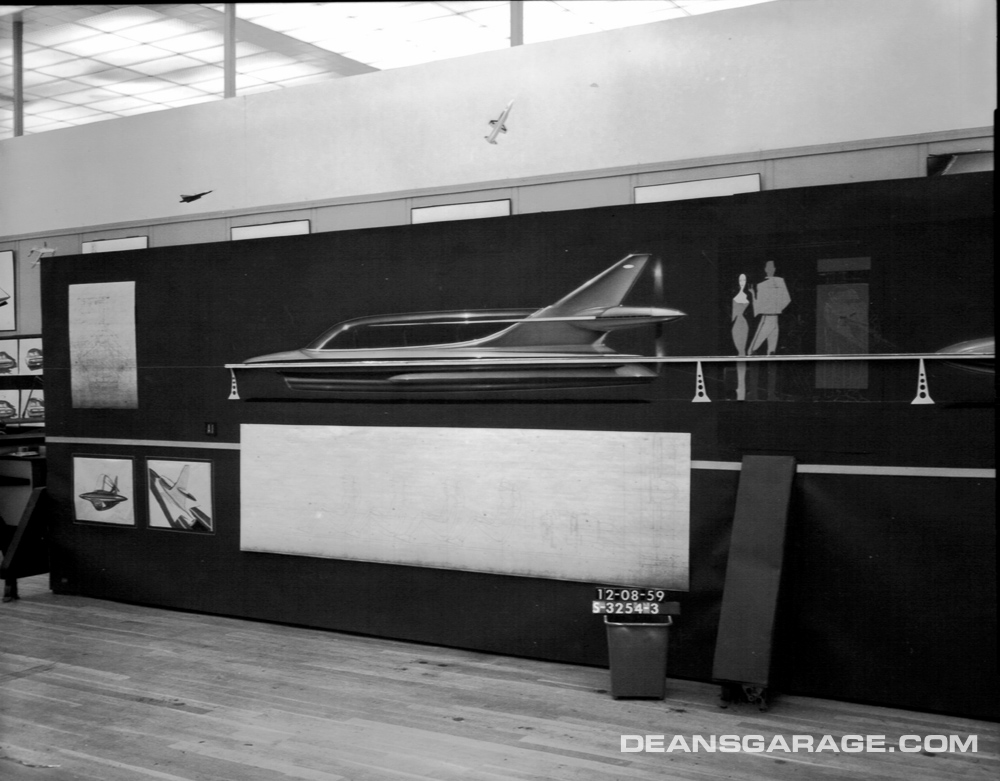
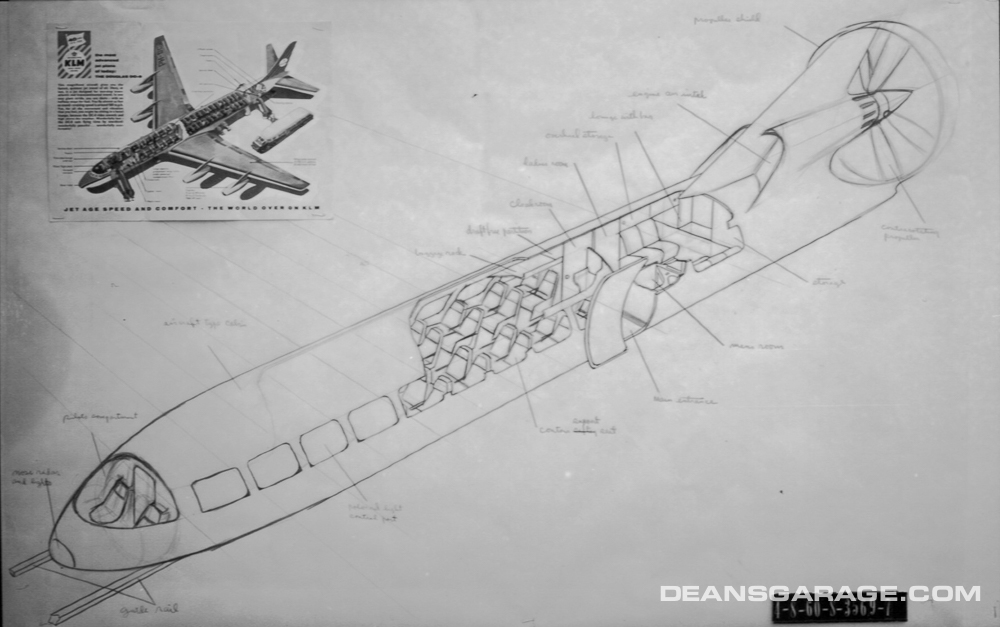
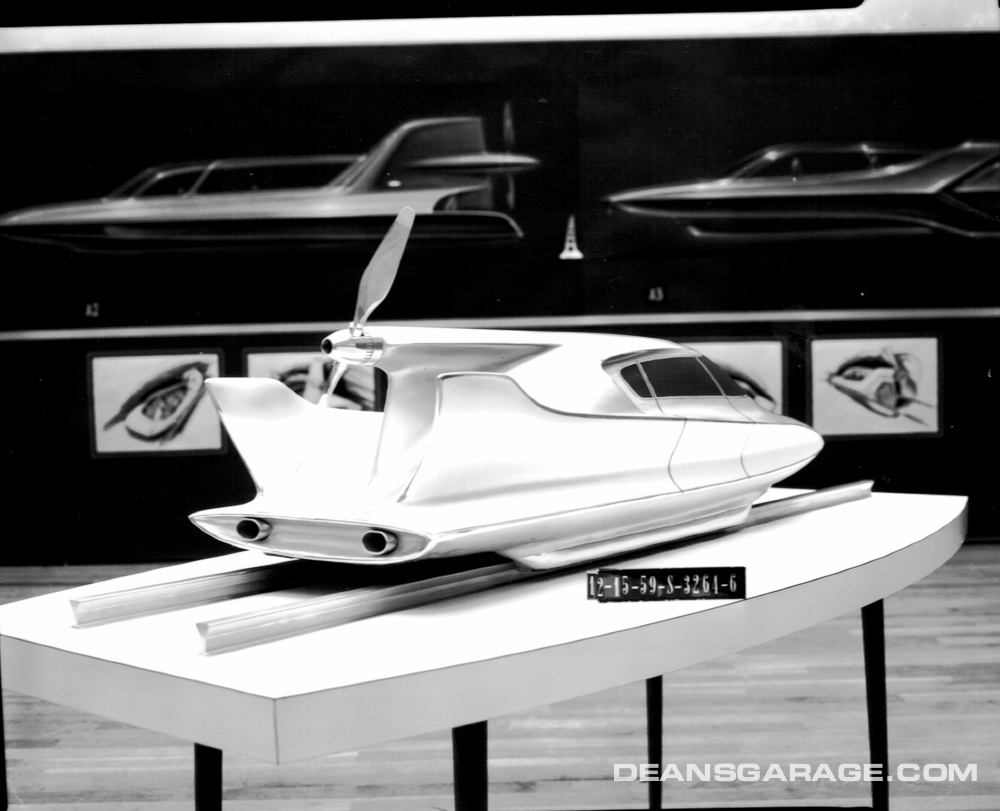
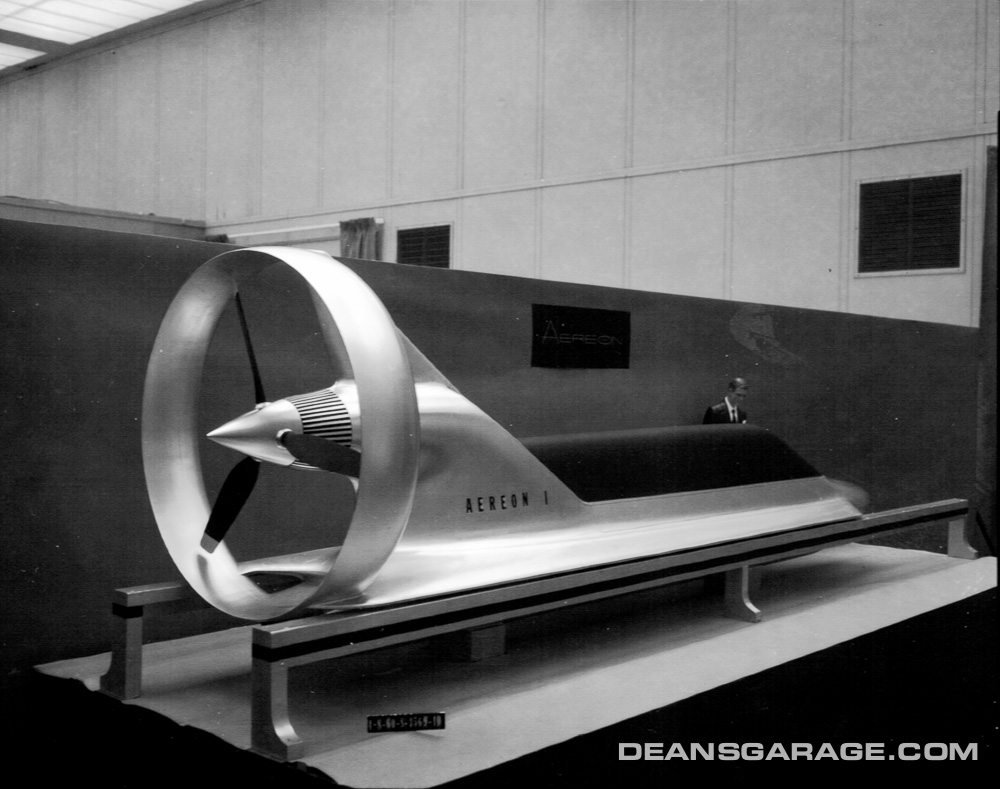
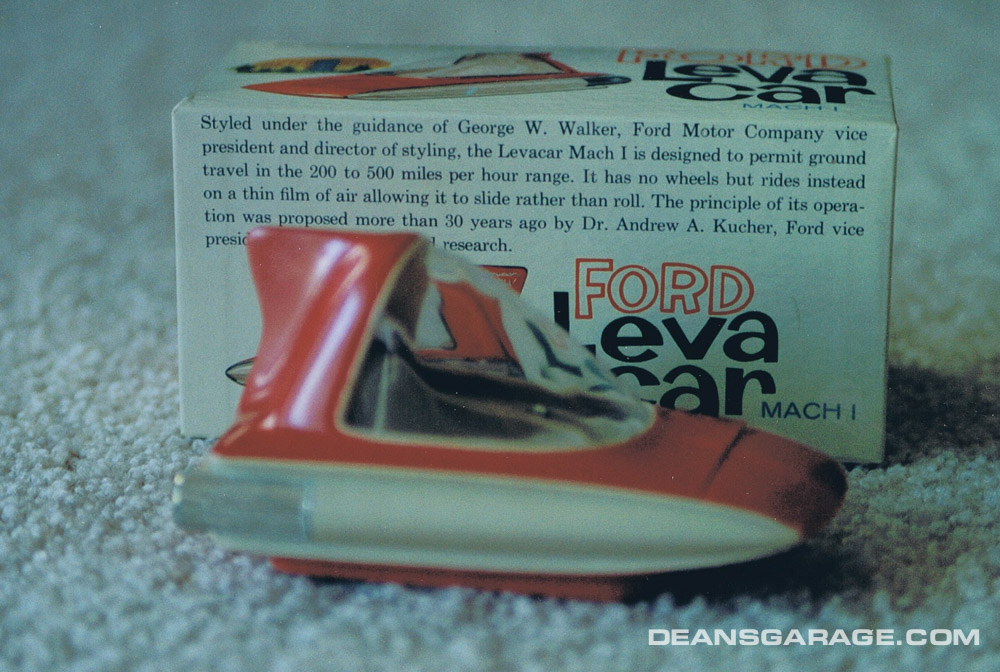
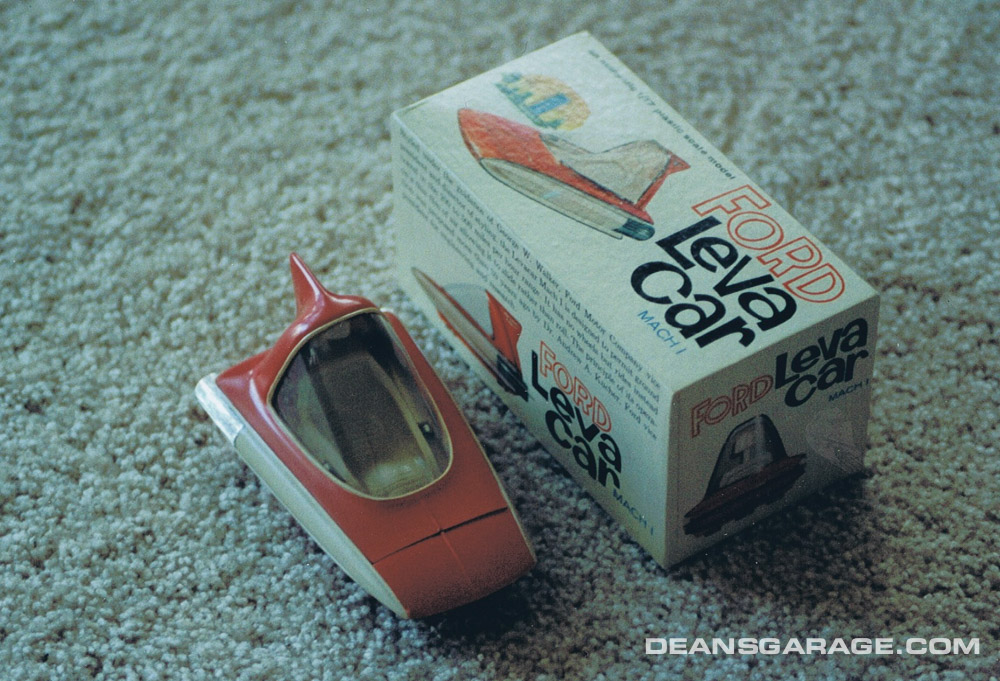
GM had a magnetic levitation vehicle development program at the Research Laboratories that I saw in the mi-sixties. It had a short run of about thirty feet. It worked on a very precisely controlled surface only.
The air powered levitation vehicle that was developed at GM Design was originally createded so that housewives could pull their Frigidaire away from the wall to clean under it. It was a flat rubber bag that fit under the refrigerator and lifted it through strategically placed air vents. Just enough to make it relatively weightless. A small electric compressor powered it.
An extension of that program was a pad with a high pressure bag to move clay models around by pumping air into it and releasing some of it near the floor to float the whole thing. It created a lot of screeching and clouds of dust, even inside the Design building. It didn’t last long, it was powered by some kind of small engine that was also very noisy.
That led to the boats that are quite successful. I crossed the English Channel twice in a ferry. It also made a lot of noise and was driven off of the water right up onto a large flat area where we boarded. Not a fun trip as it caused so much spray that you could not see out of it. It moved accross the water under the power of two fairly large aircraft engines with propellers that also were very noisy and caused a lot of spray.
Is that Engel in the check-patterned suit? Arms folded and a scowling look make him seem a bit unconvinced of the proposal.
Frankly, my scale model of the Ford Levacar did not function very well with the rubber tube / mouthpiece. Like the full-size “car” (pod ?), the surface had to be flawless for the vehicle to move. The eleven-year-old me was not impressed.
As a summer intern at Ford Design Center I was placed in the Ford Rotunda in the “Styling Display” they had there. I was the only summer intern Ford had that year; 1959.
It was a chance to sketch my ideas & model them on an 1/8th scale clay model. Nearby was the “Mach I Levacar” that was inspirational, to say the least.
Some days, when needed, the Rotunda would have me ride in the Levacar during the demonstration. My guess is about 20 times I rode in the “Mach I Levacar”. A smooth ride over the polished stainless steel “road” surface.
Graduating from the Cleveland Inst. of Art, the following Spring, GM & Ford offered me employment. I went to Ford, largely because of my internship. It also meant I got to meet & work with all the designers and clay modelers of the “Mach I Levacar” project. They were a talented team.
Some of the Syd Mead paintings were probably reflective of that Ford Styling program.
Please place the names of people shown in pictures, so as I can relate to names within the stories.
Some of the photos are now captioned.—Gary
Do you think you know who any of them are?
Great to read the story about the Levacar. I had one of those models with the mouthpiece. The pictures, especially of the box and the model, bring back memories. I wish I still had it!
My dad worked for a Ford dealer at the time and l got on of the tube powered models. I was excited about the concept at the time but always why l never saw it come to fruition. But I think it is probably a more practical idea now with electric power and today’s battery technology. I would love to see it come to life as a practical vehicle.
Does anyone know what the rear of the Levacar looked like when on display? The AMT model had a chrome panel with a tubular protrusion but the clay model shown here has a smooth rear end.